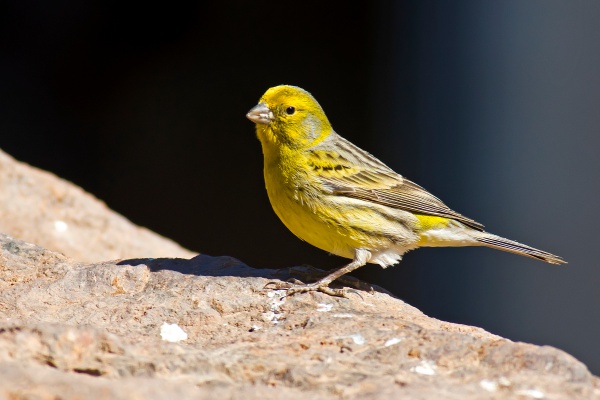Facts About Atlantic canary
The Atlantic canary, often simply called the canary, is a charming little bird native to the Canary Islands, the Azores, and Madeira. Known by various names such as the wild canary or island canary, these birds are a delightful sight in the wild, with their mostly yellow-green feathers accented by brownish streaks on their backs. They belong to the finch family, Fringillidae, and are scientifically classified under the genus Serinus. Many people also keep them as pets, and breeders have developed a variety of color forms.
These birds are quite petite, measuring between 10-12 cm in length with a wingspan of 21-23.7 cm, and they weigh anywhere from 8.4 to 24.3 grams. Male canaries are more vibrant, displaying predominantly yellow-green plumage, while females are a bit more subdued with greyer feathers. Compared to their close relative, the European serin, Atlantic canaries are larger and have less contrasting colors. Their song is a delightful, silvery twittering, much like other finches. Interestingly, they can also hybridize with the white-rumped seedeater.
Originally, scientists thought the Atlantic canary was just a subspecies of the European serin, but they later reclassified it into its own genus, Serinus. Despite this, the two species are closely related and can even produce fertile offspring together.
Atlantic canaries are found across the Canary Islands, Azores, and Madeira. They thrive in a variety of habitats, from lush pine and laurel forests to sandy dunes. They are particularly fond of semi-open areas with small trees. These adaptable birds have also established populations in places like the Hawaiian Islands, Bermuda, and Puerto Rico, thanks to human introduction.
Atlantic canaries are social creatures, often nesting in groups. They build cup-shaped nests in trees or bushes, cleverly hidden from predators. Typically, a female will lay 3-4 eggs per clutch and can raise 2-3 broods each year. Their diet is quite varied, consisting mostly of seeds, plant material, and small insects, which they forage from the ground or low vegetation.

 Morocco
Morocco